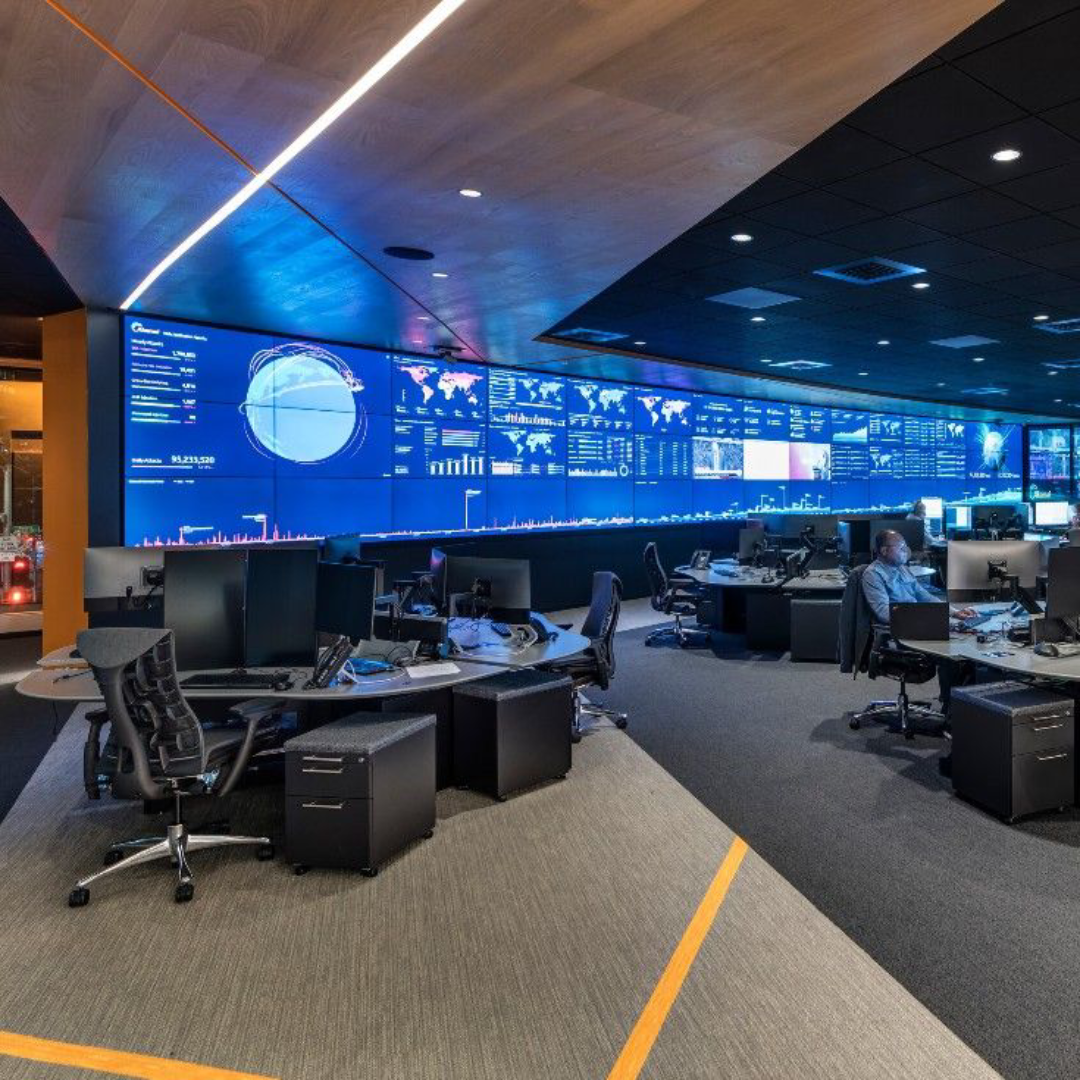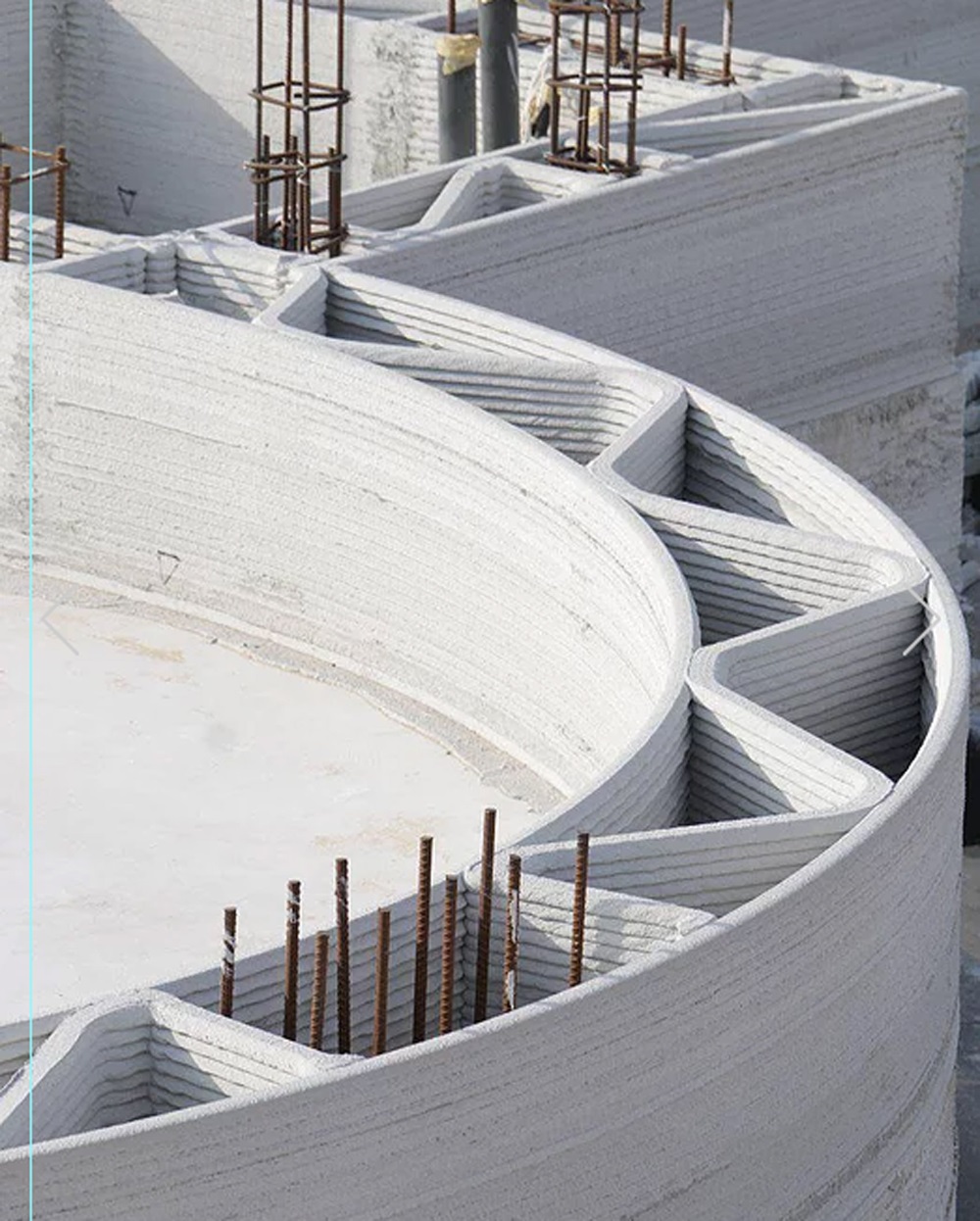Integrating Technology into Current Home Building Systems
Table of Contents:
Introduction
Key Technologies Transforming Home Building
Benefits of Technology Integration
Challenges and Considerations
Case Studies
Future Trends in Technology Integration
Steps to Successful Technology Integration
Introduction

The construction industry has undergone a remarkable transformation over the years, with technology playing a pivotal role in reshaping the way homes are built. From ancient civilizations constructing basic shelters to today’s cutting-edge structures, the evolution of home building has been marked by innovation. In the modern era, the integration of technology into home building systems has taken center stage, ushering in a new era of efficiency, precision, and sustainability.
The Evolution of Home Building
Throughout history, the construction of homes and buildings has progressed from manual labor and basic tools to sophisticated machinery and advanced techniques. Early civilizations used rudimentary materials like clay, wood, and stone to create simple dwellings. As societies developed, architectural styles evolved, and the construction process became more complex.
The Industrial Revolution brought about significant changes to construction, introducing mass production of building materials and mechanized techniques. However, it wasn’t until recent decades that technology truly revolutionized the industry, introducing digital tools and automation that have streamlined every phase of home building.
Importance of Technology Integration
In today’s fast-paced world, the integration of technology into home building systems is not merely a luxury but a necessity. Technology offers solutions to various challenges faced by the construction industry, such as inefficient processes, project delays, and environmental concerns. By incorporating state-of-the-art technologies, home builders can achieve higher levels of efficiency, precision, and sustainability in their projects.
This blog will delve into the key technologies that are transforming the landscape of home building, the benefits that arise from their integration, the challenges that builders might encounter, and the future trends that promise to reshape the industry further. Through a series of case studies, we will explore real-world examples of how technology has been successfully integrated into home building projects. Additionally, we will provide insights into the steps required for a successful technology integration process.
As the construction industry continues to evolve, embracing technology becomes paramount for staying competitive, delivering superior quality, and contributing to a more sustainable future. Join us on this journey to uncover the dynamic intersection of technology and home building, where innovation paves the way for the homes of tomorrow.
Key Technologies Transforming Home Building

In an era marked by rapid technological advancement, the home building industry has embraced a multitude of innovative technologies that are reshaping traditional processes and driving the sector into the future. These key technologies are revolutionizing every stage of construction, from planning and design to construction and maintenance. Let’s explore some of the transformative technologies that are changing the face of home building:
1. Building Information Modeling (BIM)
Building Information Modeling, or BIM, is a digital representation of a building’s physical and functional characteristics. BIM allows architects, engineers, and contractors to collaborate in a virtual environment, creating detailed 3D models that include information about materials, dimensions, systems, and more. This technology streamlines communication, reduces errors, and enhances project coordination, ultimately leading to improved project outcomes.
2. Prefabrication and Modular Construction
Prefabrication and modular construction involve assembling building components off-site in controlled environments before transporting them to the construction site for final assembly. This approach significantly reduces construction timelines and minimizes disruptions caused by weather conditions. Modular construction also enhances quality control and promotes sustainability by optimizing material usage.
3. Smart Home Automation
Smart home automation integrates various technologies to create homes that are more energy-efficient, convenient, and secure. From automated lighting and temperature control to security systems that can be monitored remotely, smart homes offer enhanced comfort and control for residents. These systems can be seamlessly integrated into the design and construction of new homes, enhancing their appeal and value.
4. Sustainable Building Practices
The push for sustainability in home building has led to the adoption of eco-friendly materials, energy-efficient systems, and environmentally conscious construction practices. Technologies such as solar panels, rainwater harvesting systems, and energy-efficient insulation contribute to reducing a home’s carbon footprint and operational costs, while also promoting a healthier living environment.
5. 3D Printing in Construction
3D printing, also known as additive manufacturing, is making its mark in the construction industry. Large-scale 3D printers can create intricate building components using a variety of materials, from concrete to composite materials. This technology enables faster construction, reduces material wastage, and offers design flexibility that was previously unimaginable.
As the home building industry evolves, these technologies are becoming integral to modern construction practices. By embracing these innovations, home builders can optimize processes, enhance project outcomes, and deliver homes that are not only aesthetically pleasing but also sustainable and technologically advanced. In the next sections, we will delve deeper into the benefits of integrating these technologies and the challenges that might arise during their implementation.
Benefits of Technology Integration
The integration of technology into current home building systems offers a wide array of benefits that extend beyond just improving efficiency. These advantages touch on various aspects of the construction process, ultimately leading to better project outcomes and enhanced customer satisfaction. Let’s explore some of the key benefits of integrating technology into home building:
1. Improved Efficiency and Productivity
Technology streamlines traditionally time-consuming processes, allowing tasks to be completed more quickly and accurately. For example, Building Information Modeling (BIM) enables collaborative design and reduces errors in planning. Prefabrication and modular construction speed up assembly on-site, while automated machinery and robotics enhance efficiency during construction tasks.
2. Enhanced Collaboration and Communication
Digital tools facilitate seamless communication and collaboration among different stakeholders, including architects, engineers, contractors, and clients. BIM platforms enable real-time collaboration, reducing miscommunications and ensuring that everyone is on the same page. Virtual project management tools enhance transparency and enable better tracking of project milestones.
3. Cost Savings and Waste Reduction
Efficiency gains translate to cost savings in terms of labor, time, and resources. Prefabrication minimizes material waste, as components are manufactured to precise specifications. Additionally, technology can help optimize material usage and reduce errors, contributing to cost-effective project execution.
4. Higher Quality and Precision
Digital design tools enable precise planning and accurate measurements, resulting in higher-quality construction. Components manufactured off-site in controlled environments are less prone to defects. Smart home automation systems ensure that installations are consistent and aligned with design specifications, enhancing the overall quality of the finished product.
5. Enhanced Sustainability and Energy Efficiency
Many integrated technologies support sustainable building practices. Solar panels, energy-efficient HVAC systems, and smart thermostats contribute to reduced energy consumption and lower utility bills for homeowners. Sustainable practices also align with environmental regulations and market demands for eco-friendly homes.
6. Real-time Monitoring and Maintenance
Smart home technology allows homeowners to monitor and control various aspects of their homes remotely. This includes security systems, energy consumption, and even appliances. This real-time monitoring enables proactive maintenance, identifying issues before they become significant problems.
7. Competitive Advantage and Innovation
Builders who embrace technology gain a competitive edge in the market. Technologically advanced homes are more attractive to buyers, offering features that enhance comfort, security, and energy efficiency. By continuously adopting new technologies, builders position themselves as industry innovators and adapt to changing customer preferences.
8. Data-Driven Decision Making
Technology integration generates valuable data throughout the construction process, from design to completion. Analyzing this data provides insights into project performance, enabling informed decision-making and continuous improvement.
Incorporating technology into home building systems is not just a trend but a strategic move that brings about numerous benefits. From optimizing processes to delivering superior-quality homes, technology empowers builders to navigate the challenges of modern construction and create homes that meet the demands of today’s discerning consumers. In the next section, we’ll delve into the challenges and considerations that come with technology integration in home building.
Challenges and Considerations
While the integration of technology into home building systems offers numerous benefits, it also comes with its own set of challenges and considerations. Builders must be prepared to address these challenges to ensure a successful implementation and maximize the advantages of technology. Let’s explore some of the key challenges and considerations:
1. Initial Costs and Investment
Adopting new technologies often requires a significant upfront investment. Costs can include purchasing software, hardware, training personnel, and implementing new processes. Builders need to carefully assess the return on investment (ROI) over the long term to justify these initial expenses.
2. Workforce Training and Skill Development
Introducing new technologies requires a skilled workforce capable of effectively using and maintaining these tools. Providing training to employees is crucial to ensure they can leverage technology to its fullest potential. Upskilling and continuous learning are essential to keep up with evolving technologies.
3. Data Security and Privacy Concerns
Digital systems generate and store sensitive data related to projects, clients, and operations. Ensuring data security and privacy is paramount to prevent unauthorized access or breaches. Builders must implement robust cybersecurity measures to safeguard information.
4. Integration Complexity and Compatibility
Integrating multiple technologies can lead to compatibility challenges. Different software systems may not communicate effectively, leading to data discrepancies and workflow disruptions. Choosing solutions that can seamlessly integrate or designing custom integration plans is essential.
5. Resistance to Change
Introducing new technologies may face resistance from employees accustomed to traditional processes. Overcoming this resistance requires effective change management strategies, clear communication, and demonstrating the benefits of technology adoption.
6. Regulatory and Compliance Considerations
Technology adoption should align with building codes, regulations, and industry standards. Builders must ensure that the integrated technologies meet legal requirements and are approved for use in construction projects.
7. Maintenance and Technical Support
After implementation, technology systems require ongoing maintenance and technical support. Builders should have plans in place for regular updates, troubleshooting, and addressing technical issues promptly to minimize disruptions.
8. Scalability and Long-Term Viability
Builders need to consider the scalability of the technologies they adopt. Will these solutions continue to meet the needs of the company as it grows? Ensuring the long-term viability of the technology is essential to avoid investing in systems that quickly become obsolete.
9. Balancing Innovation with Tradition
While technology integration is essential for progress, maintaining a balance between innovation and traditional craftsmanship is crucial. Builders should strive to retain the unique human touch that contributes to the quality and character of homes.
Navigating these challenges requires careful planning, collaboration, and a forward-thinking approach. By addressing these considerations, builders can pave the way for successful technology integration that transforms their operations and enhances the overall construction process. In the next section, we will explore real-world case studies that demonstrate how technology integration has been successfully implemented in home building projects.
Case Studies
Real-world case studies provide valuable insights into how technology integration has been effectively implemented in home building projects. These examples showcase the transformative impact of technology on various aspects of construction. Let’s explore three case studies that highlight successful technology integration:
1. Project A: BIM Implementation for Streamlined Workflows
In this case, a home construction company embraced Building Information Modeling (BIM) to enhance project coordination and communication. By creating a collaborative digital model of the entire project, architects, engineers, and contractors could work together in real-time, identifying potential clashes and design issues before construction began. This eliminated costly rework and delays. The BIM model was also used for scheduling and material ordering, resulting in optimized timelines and reduced material wastage. The successful implementation of BIM improved overall project efficiency and quality.
2. Project B: Smart Home Integration for Energy Efficiency
A home builder incorporated smart home technology into its projects to provide homeowners with energy-efficient and connected living spaces. Smart thermostats, lighting systems, and energy monitoring tools were seamlessly integrated into the homes’ designs. Homeowners could control these systems remotely, optimizing energy usage and reducing utility bills. The builder partnered with energy companies to offer incentives for energy-efficient homes, attracting environmentally conscious buyers and enhancing the homes’ market value.
3. Project C: Modular Construction for Faster Completion
In this case, a home construction company adopted modular construction techniques to expedite project completion. The company established a modular manufacturing facility where building components were fabricated off-site under controlled conditions. These components were then transported to the construction site and assembled, significantly reducing construction timelines. This approach allowed for greater consistency in quality and minimized weather-related delays. The streamlined process also attracted buyers looking for quicker occupancy, giving the company a competitive edge in the market.
These case studies demonstrate the versatility and effectiveness of technology integration in home building. Whether it’s improving collaboration through BIM, enhancing energy efficiency with smart home technology, or accelerating construction through modular techniques, technology plays a pivotal role in shaping the future of the industry. By learning from these examples, builders can gain inspiration and insights for their own technology integration endeavors.
In the next section, we will explore the future trends in technology integration that are poised to further transform the home building industry.
Future Trends in Technology Integration

As technology continues to advance at an exponential pace, the home building industry is on the brink of experiencing even more transformative changes. Emerging trends are set to reshape the way homes are designed, constructed, and lived in. Let’s explore some of the future trends in technology integration that will likely shape the future of home building:
1. Internet of Things (IoT) and Connected Homes
The Internet of Things (IoT) is a network of interconnected devices that can communicate and share data. In home building, IoT allows for the creation of smart homes where devices and systems are interconnected and can be controlled remotely. From smart appliances and lighting to security systems and even automated gardening, IoT enables homeowners to customize their living experiences and enhance energy efficiency.
2. Artificial Intelligence and Machine Learning
Artificial Intelligence (AI) and Machine Learning (ML) are poised to revolutionize design and construction processes. AI can analyze vast amounts of data to identify design patterns, optimize layouts, and suggest energy-efficient solutions. ML algorithms can predict project risks and help schedule tasks for maximum efficiency. As AI and ML technologies mature, they will become integral in decision-making and project management.
3. Augmented Reality (AR) and Virtual Reality (VR) Applications
AR and VR technologies offer immersive experiences that have practical applications in home building. Architects and designers can use AR to visualize designs on-site, making real-time adjustments and avoiding discrepancies. VR can enable potential buyers to take virtual tours of properties that are still under construction, allowing them to make informed decisions and experience the final product before it’s built.
4. Green Technology Innovations
Sustainability remains a driving force in home building. Green technologies, such as advanced solar panels, energy-efficient HVAC systems, and water-saving solutions, will become even more integrated into building designs. Additionally, new materials with reduced environmental impact, like recycled and biodegradable materials, will gain prominence as builders strive to create eco-friendly homes.
5. Robotics and Automation
The use of robotics in construction is expanding. Robots can perform tasks that are repetitive, dangerous, or require extreme precision. Bricklaying, concrete pouring, and even 3D printing are tasks that can be automated using robots. This not only increases efficiency but also reduces the need for manual labor in hazardous conditions.
6. Blockchain for Transparency and Accountability
Blockchain technology has the potential to enhance transparency and accountability in the construction process. It can securely store project data, contracts, and transactions, ensuring that information is tamper-proof and easily accessible to all stakeholders. This can reduce disputes, streamline payments, and improve project documentation.
As these trends continue to evolve, the home building industry will experience a significant transformation. Builders who embrace these innovations will be better positioned to meet the changing demands of homeowners, create more efficient processes, and contribute to a more sustainable and technologically advanced future. In the final section of this blog, we’ll outline the steps to successful technology integration in home building.
Steps to Successful Technology Integration
Integrating technology into home building systems requires a strategic approach to ensure smooth implementation and maximize the benefits of new tools and processes. By following a well-defined plan, builders can navigate the challenges and complexities of technology integration. Here are the steps to successfully integrate technology into home building:
1. Assessing Current Systems and Needs
Begin by evaluating your current processes, tools, and systems. Identify pain points, bottlenecks, and areas where technology can make a significant impact. Consider both short-term and long-term goals, and involve key stakeholders in the assessment process.
2. Identifying Appropriate Technologies
Research and identify technologies that align with your goals and address the challenges identified in the assessment phase. Look for solutions that offer scalability, compatibility, and a track record of successful implementation in the construction industry.
3. Planning and Implementation Strategies
Develop a comprehensive implementation plan that outlines the steps, timelines, and resources required for technology integration. Define roles and responsibilities for team members involved in the implementation process. Ensure that the plan considers potential disruptions and downtime during the transition.
4. Piloting and Testing
Before full-scale implementation, consider piloting the new technology on a smaller project or in a controlled environment. This allows you to identify any potential issues and refine the implementation plan based on real-world feedback. Thoroughly test the technology to ensure it meets your requirements.
5. Training and Skill Development
Provide training to your workforce to ensure they are proficient in using the new technology. Training can range from basic operation to advanced troubleshooting. Invest in ongoing skill development to keep your team updated on the latest features and best practices.
6. Integration and Customization
Integrate the new technology with your existing systems, ensuring that data can flow seamlessly between different tools. Customize the technology to suit your specific needs, optimizing workflows and processes for maximum efficiency.
7. Monitoring, Testing, and Iteration
Continuously monitor the performance of the integrated technology and gather feedback from your team. Conduct regular testing to identify any issues or improvements needed. Iterate and refine your processes based on the feedback received, aiming for continuous improvement.
8. Change Management and Communication
Effective change management is crucial for successful technology integration. Communicate the benefits of the new technology to your team and address any concerns they may have. Keep an open line of communication throughout the implementation process to ensure a smooth transition.
9. Data Security and Compliance
Prioritize data security and compliance with relevant regulations. Implement robust cybersecurity measures to protect sensitive information. Ensure that the integrated technology meets industry standards and legal requirements.
10. Measuring and Evaluating Results
Once the technology is fully integrated, measure and evaluate its impact on your projects. Assess whether the technology has achieved the intended benefits, such as improved efficiency, cost savings, and enhanced quality. Use key performance indicators (KPIs) to track progress and make data-driven decisions.
By following these steps, builders can navigate the challenges of technology integration and create a roadmap for success. A well-executed technology integration strategy can revolutionize your home building processes, enhance project outcomes, and position your company as a leader in the industry. In the concluding section, we’ll reflect on the continuous evolution of home building and the role of technology in shaping its future.





